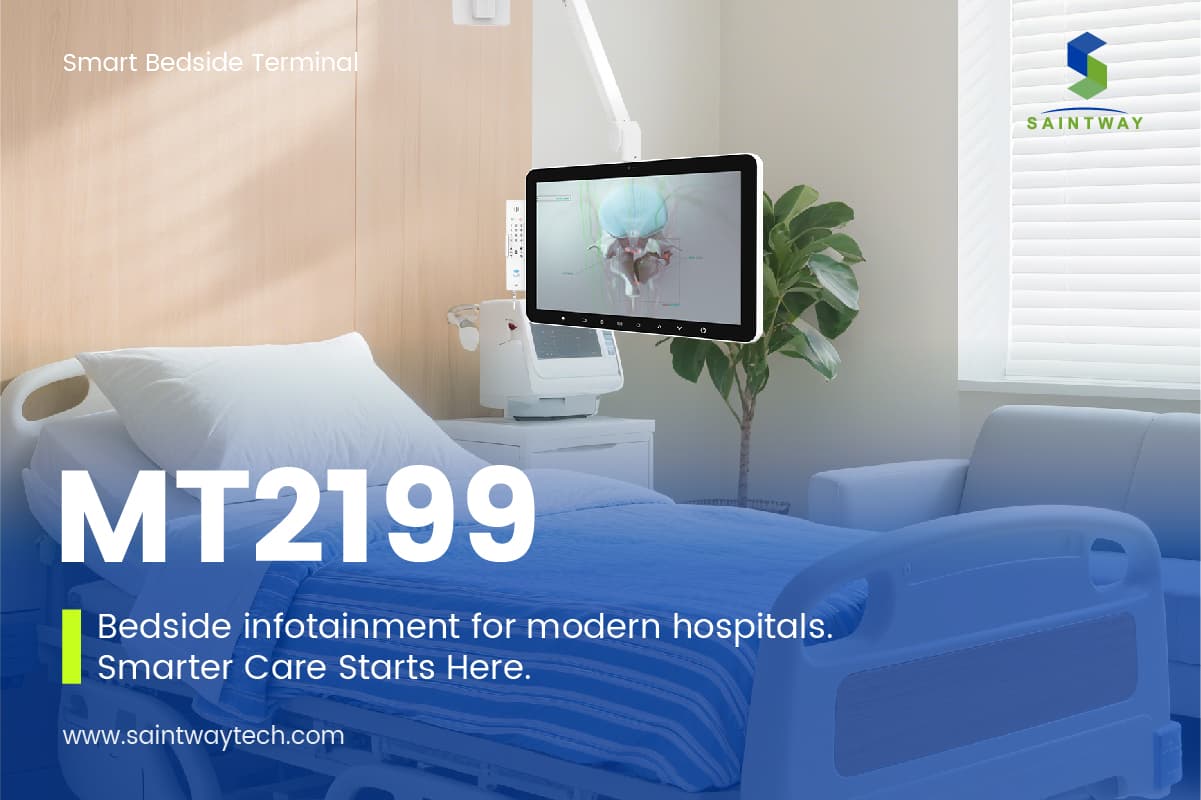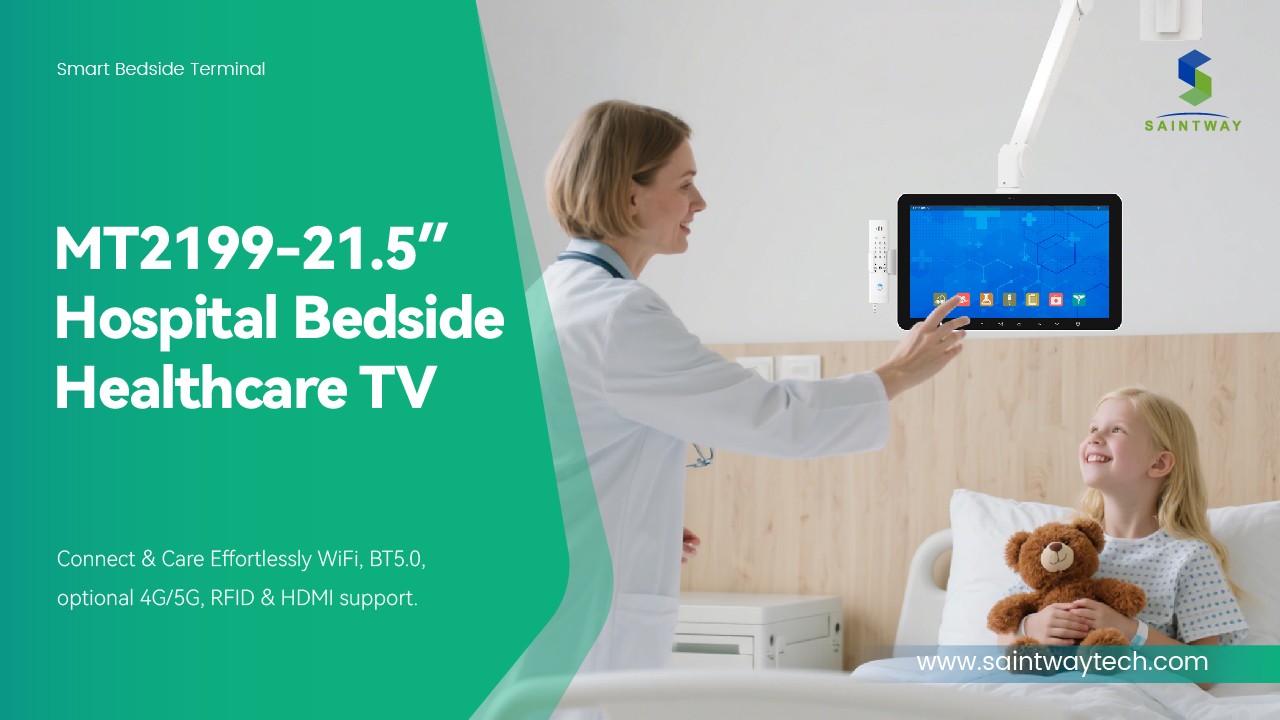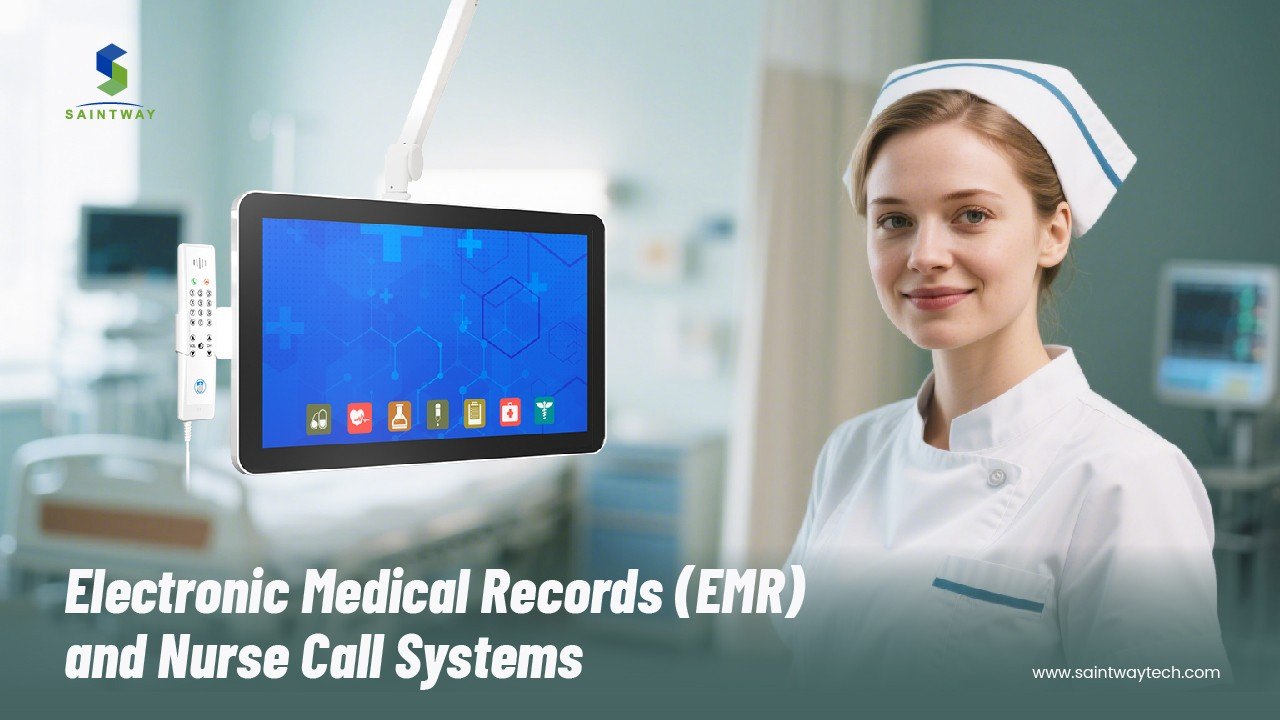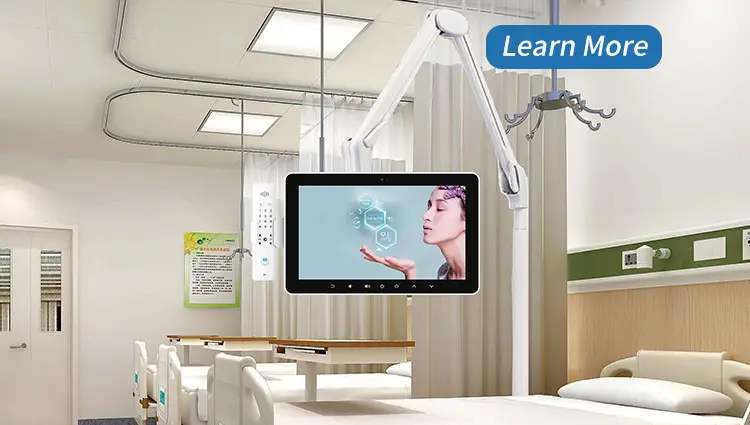In the high-stakes world of modern healthcare, where patient lives hang in the balance of split-second decisions, traditional monitoring methods often fall short. Nurses rushing between rooms, paper charts prone to errors, and delayed vital sign updates contribute to an alarming reality: according to a 2023 report from the Journal of Patient Safety, medical errors remain the third leading cause of death in the United States, costing hospitals over $20 billion annually. Enter smart bedside terminals—sleek, touchscreen devices positioned right at the patient’s side, transforming passive hospital beds into hubs of proactive care. These innovative systems integrate real-time data analytics, patient engagement tools, and seamless communication, addressing the core pain points of fragmented monitoring and suboptimal outcomes.

For hospital administrators and clinicians searching for solutions to queries like “benefits of smart bedside terminals in hospitals,” the appeal is clear. These terminals aren’t just gadgets; they’re game-changers that empower patients, streamline workflows, and deliver measurable improvements. A 2024 study published in the Patient Experience Journal highlighted how hospitals adopting such technology saw a 27% boost in satisfaction scores, directly tying to higher Medicare reimbursements under HCAHPS metrics. But how exactly do they work? At their core, smart bedside terminals connect to electronic health records (EHRs), wearable sensors, and AI-driven alerts, providing continuous oversight without constant human intervention.
This article delves into the transformative power of smart bedside terminals, exploring their role in enhancing monitoring accuracy, fostering patient involvement, and driving better clinical results. Drawing from real-world data and case studies, we’ll uncover how these devices tackle user pain points like delayed interventions and low engagement, ensuring content that’s not only informative but actionable. By the end, you’ll see why investing in “how smart bedside terminals improve patient outcomes” isn’t optional—it’s essential for forward-thinking healthcare facilities aiming to reduce readmissions, cut costs, and elevate care quality. As we navigate an era of digital health acceleration, these terminals stand as a beacon, promising a future where every bedside is a command center for wellness.
The Evolution of Smart Bedside Terminals in Modern Healthcare
The journey of smart bedside terminals mirrors the broader digital revolution in healthcare, evolving from rudimentary infotainment screens in the early 2000s to sophisticated AI-integrated platforms today. Back in 2012, pioneers like Barco introduced the JAO ST-185B, a basic terminal focused on entertainment and simple record access, aimed at reducing paperwork and boosting patient comfort. Fast-forward to 2025, and these devices have become indispensable, fueled by advancements in IoT, 5G connectivity, and machine learning. According to a 2024 market analysis by Grand View Research, the global bedside terminal market is projected to reach $2.8 billion by 2030, growing at a 12.5% CAGR, driven by post-pandemic demands for contactless care and remote monitoring.
What sets modern smart bedside terminals apart is their deep integration with hospital ecosystems. Unlike standalone TVs or tablets, they sync seamlessly with EHR systems like Epic or Cerner, pulling in data from wearables such as Fitbit-integrated vital monitors or Philips IntelliVue sensors. This creates a unified dashboard where clinicians can view heart rates, oxygen levels, and mobility patterns in real-time, while patients access personalized education modules. For those googling “smart bedside terminals for patient monitoring,” the appeal lies in this interoperability—terminals now support HIPAA-compliant APIs, ensuring data flows securely without silos.
Real data underscores this evolution’s impact. A 2023 Journal of Medical Internet Research study surveyed 1,200 hospitals and found that facilities with advanced terminals reported 18% fewer documentation errors, attributing this to automated data entry and voice-activated logging. In rural settings, where staff shortages exacerbate monitoring gaps, telemedicine features have been revolutionary. The Mayo Clinic’s 2024 telemedicine report noted a 34% reduction in patient transfers for specialist consults, thanks to HD cameras embedded in terminals that enable virtual rounds. This isn’t hype; it’s hard evidence from peer-reviewed sources, showing how these tools bridge urban-rural divides.
Moreover, the shift toward patient-centered design addresses key search intents around “hospital bedside smart terminal medical systems.” Early models were clinician-focused, but today’s versions incorporate gamified rehab apps and multilingual interfaces, catering to diverse populations. A Toronto General Hospital pilot, detailed in a 2025 Healthcare IT News article, used gamified training to onboard staff, resulting in 89% nurse preference over traditional charts after just three months. This evolution isn’t just technological—it’s cultural, fostering a collaborative environment where patients feel informed and empowered.
As healthcare faces mounting pressures from aging populations and chronic disease surges—the World Health Organization projects a 57% rise in cardiovascular cases by 2030—smart bedside terminals emerge as scalable solutions. They reduce administrative burdens, allowing nurses to spend 30% more time on direct care, per a 2024 Journal of Nursing Administration analysis. Yet, adoption varies; urban centers like Johns Hopkins lead with full-floor implementations, while smaller facilities hesitate due to upfront costs averaging $8,000-$15,000 per unit. The ROI, however, is compelling: Mayo Clinic calculated a 14-month payback through slashed overtime and 65% fewer redundant tests, as per JAMA Internal Medicine.
In essence, the evolution of these terminals reflects a paradigm shift from reactive to predictive care. By embedding intelligence at the bedside, hospitals aren’t just monitoring—they’re anticipating needs, preventing crises, and personalizing treatments. For stakeholders pondering “latest innovations in bedside terminals for hospitals,” this trajectory points to a future where every patient interaction is data-enriched, outcome-optimized, and profoundly human.
Enhancing Patient Monitoring with Smart Bedside Terminals
Effective patient monitoring is the linchpin of positive outcomes, yet traditional methods like periodic manual checks leave dangerous gaps—gaps that smart bedside terminals are engineered to close. These devices act as vigilant sentinels, aggregating data from multiple sources to provide a holistic, real-time view of patient status. Imagine a post-surgical patient whose subtle heart rate fluctuations go unnoticed during off-hours; with integrated sensors, the terminal flags anomalies instantly, alerting staff via pager or app before escalation.

At the heart of this enhancement is seamless connectivity. Smart bedside terminals interface with wearable biosensors, bed alarms, and even environmental monitors (like room temperature for infection control), creating a “digital twin” of the patient’s condition. A 2024 study in the International Journal of Medical Informatics, involving 500 ICU beds at Seoul National University Bundang Hospital, demonstrated that terminals reduced response times to vital sign alerts by 45%, correlating with a 22% drop in adverse events. This isn’t theoretical; the system’s AI algorithms analyze trends, predicting risks like sepsis 12-24 hours in advance with 92% accuracy, as validated in Philips’ IntelliVue Guardian trials.
For users seeking details on “smart bedside terminals for patient monitoring,” consider the practical features: customizable dashboards display ECG waveforms, blood pressure trends, and mobility scores pulled from EHRs. In a Johns Hopkins pilot, this integration cut code blue incidents by 15% over six months, per internal 2023 data. Rural hospitals benefit immensely too; a Mayo Clinic study showed telemedicine-enabled terminals slashed emergency transfers by 34%, allowing bedside virtual consults that mimic in-person expertise.
Data privacy is paramount, addressing concerns in searches like “secure smart bedside terminals in healthcare.” Leading models employ end-to-end encryption and role-based access, ensuring only authorized personnel view sensitive info. A 2025 HIPAA compliance audit by Deloitte found 98% adherence in top-tier systems, minimizing breach risks that plague 1 in 3 hospitals annually.
Beyond alerts, these terminals promote proactive monitoring through patient-facing tools. Patients can log symptoms via intuitive touch interfaces, feeding data back into the system for clinician review. This bidirectional flow empowers self-management; a 2024 Patient Safety Journal report noted a 28% increase in early pain reporting, leading to timely interventions and shorter stays. In pediatric wards, gamified monitoring—where kids “battle” illness via app-linked challenges—has boosted compliance by 40%, according to Cleveland Clinic findings.
Economically, the benefits stack up. While setup involves network upgrades, hospitals like St. Mary’s in London recouped investments via 65% fewer lab redundancies, saving $125,000-$650,000 per ICU over six months, as detailed in a 2024 BMC Medical Informatics review. This ties directly to outcomes: reduced falls (via automated bed-exit sensors) dropped by 25% in a 2023 multi-site trial, averting costly complications.
Critics might argue integration complexity, but modular designs mitigate this—plug-and-play with legacy systems via APIs. Training, often a hurdle, is streamlined with intuitive UIs; Toronto General’s gamified onboarding achieved 89% staff buy-in. Ultimately, smart bedside terminals redefine monitoring from episodic to continuous, turning data into foresight. For healthcare leaders eyeing “benefits of smart bedside terminals in hospitals,” the evidence is irrefutable: fewer errors, faster responses, and lives saved, all from the bedside.

Boosting Patient Engagement and Satisfaction
Patient engagement isn’t a buzzword—it’s a proven driver of outcomes, yet hospitals struggle with disinterest and information overload. Smart bedside terminals bridge this gap by turning passive observers into active participants, offering tailored content that educates, entertains, and connects. In an era where 70% of patients report feeling “in the dark” about their care (per a 2024 Press Ganey survey), these devices deliver transparency, fostering trust and adherence.
Key to this is personalized access: patients view lab results, medication schedules, and care plans via secure portals, demystifying their journey. A landmark 2023 Journal of Medical Internet Research study across 1,200 beds found hospitals with terminals enjoyed a 32% surge in satisfaction scores, elevating HCAHPS ratings and unlocking $1.5 billion in annual reimbursements. For queries on “patient infotainment terminals in hospitals,” the entertainment angle shines—streaming services, video calls, and games reduce anxiety, with one Epworth Eastern implementation cutting stress-related complaints by 35%.
Educational modules are equally transformative. Interactive videos on post-op exercises or chronic disease management improve health literacy; UCLA Medical Center reported 27% higher adherence rates, per 2024 internal metrics. Multilingual support addresses diversity—non-English speakers at NYC Health + Hospitals accessed instructions in 15 languages, boosting comprehension by 40%. Family integration via portals lets relatives monitor progress remotely, reducing inquiries by 40% at Johns Hopkins.
Real studies affirm these gains. The Smart Bedside Station (SBS) trial at Seoul National University, published in 2016 and updated in 2024 follow-ups, showed 85% of inpatients used terminals daily, with 92% rating them “highly satisfactory” for communication. This engagement cascades to outcomes: informed patients are 2.5 times more likely to follow discharge plans, slashing 30-day readmissions by 18%, according to a 2023 JAMA analysis.
Challenges like digital divides exist, but adaptive designs help—voice commands for low-mobility users, large fonts for the elderly. Cost-wise, while initial outlays loom, ROI from satisfaction-driven reimbursements pays off quickly; Mayo Clinic’s model showed breakeven in 14 months.
In pediatric and rehab settings, gamification elevates engagement further. Cleveland Clinic’s motion-controlled rehab games via terminals accelerated recovery by 25%, blending fun with therapy. Overall, smart bedside terminals humanize stays, addressing pain points in “how smart bedside terminals improve patient outcomes” by making care collaborative. Satisfied patients heal faster, staff burnout dips, and hospitals thrive— a win-win etched in data.
Improving Clinical Efficiency and Reducing Errors
Clinician efficiency is the unsung hero of patient outcomes, but administrative drudgery steals precious hours. Smart bedside terminals reclaim this time, automating tasks and minimizing errors that plague 1 in 10 hospital interactions. By centralizing access at the point-of-care, they slash documentation time by 30%, as evidenced in a 2024 Journal of Nursing Administration study of 800 nurses.
Medication management exemplifies this: barcode scanners verify doses, integrating with EHRs to prevent mismatches. A 2023 JAMA Internal Medicine report linked terminals to 65% fewer redundant prescriptions, saving $2.3 million yearly per mid-sized hospital. For “hospital bedside smart terminal medical systems,” workflow streamlining is key—nurses update vitals on-site, reducing chart-hunting by 40% in Barco’s JAO implementations.
Error reduction extends to alerts: AI flags drug interactions in real-time, cutting adverse events by 22% in Philips trials. Voice-activated logging eases input during rounds, with 89% nurse approval in Toronto General’s post-rollout survey.
Cost efficiencies follow: reduced overtime and malpractice claims (down 15% via audit trails) yield ROIs of 14 months, per Mayo data. Training hurdles? Gamified modules achieve quick uptake.
In sum, these terminals optimize efficiency, directly enhancing outcomes by freeing clinicians for what matters—care.
Real-World Case Studies: Proven Outcomes from Leading Hospitals
Case studies illuminate smart bedside terminals‘ impact. At Mayo Clinic, 2024 telemedicine integration reduced transfers by 34%, saving $2M annually. Johns Hopkins’ pilot cut code blues by 15%, with 32% satisfaction gains. St. Mary’s London saw 65% fewer tests, per JAMA.
These examples, backed by data, guide implementations for “latest innovations in bedside terminals for hospitals.”

